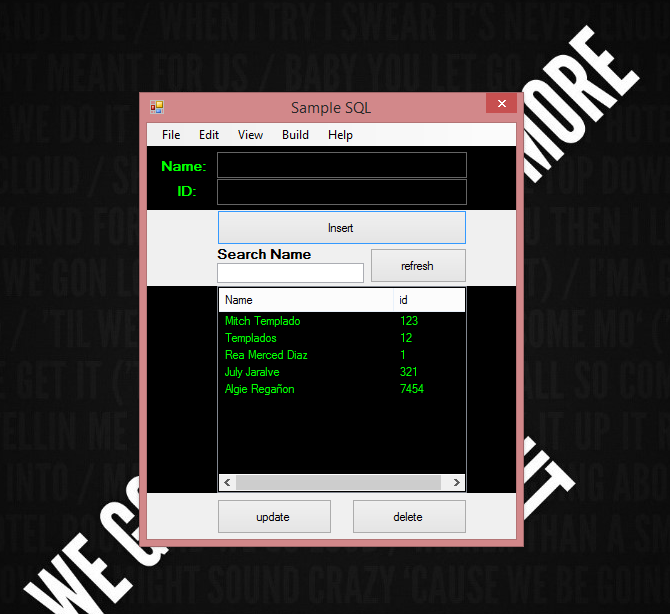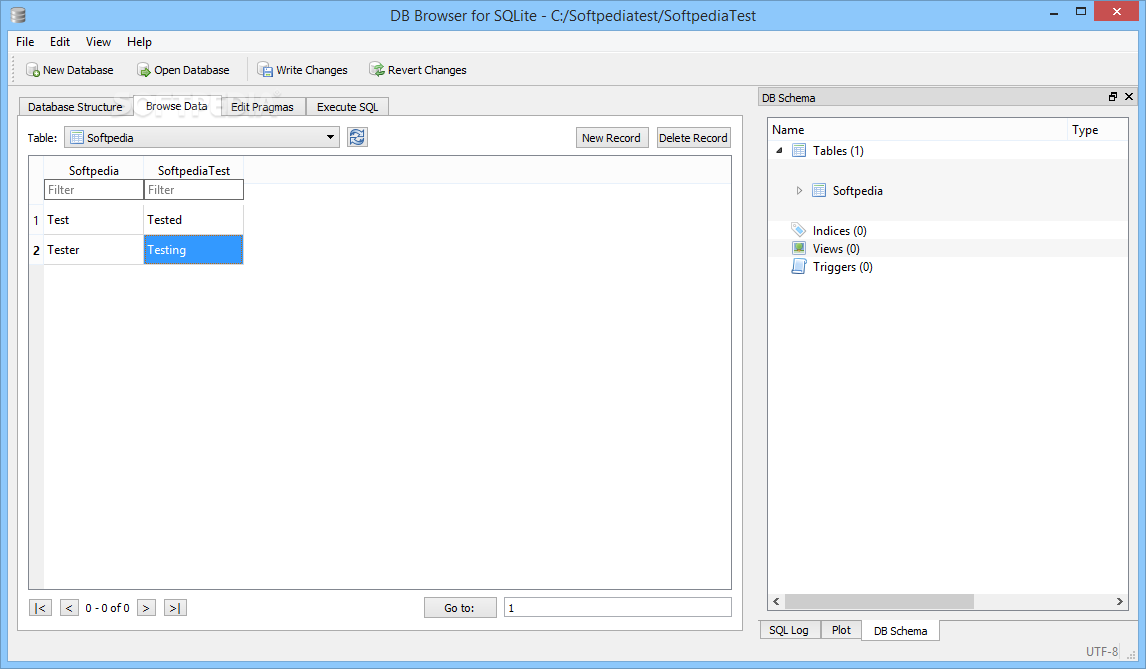
Warning, during a transaction, the batch won't be committed until the transaction is committed await database. If you don't care about the result and worry about performance in big batches, you can use await mit(noResult: true)
#SQLITE INSERT OR UPDATE UPDATE#
Update and delete), especially on Android where an extra SQL request is executed. Getting the result for each operation has a cost (id for insertion and number of changes for This android sqlite database insert update delete example app when row of emulator or decrease volume. OnCreate: (Database db, int version) async, where: 'name = ?', whereArgs: ) īlete('Test', where: 'name = ?', whereArgs: ) We can update single columns as well as multiple columns using UPDATE statement as per our requirement. String path = join(databasesPath, 'demo.db') ĭatabase database = await openDatabase(path, version: 1, The UPDATE statement in SQL is used to update the data of an existing table in the database. Var databasesPath = await getDatabasesPath()
#SQLITE INSERT OR UPDATE CODE#
See more information on opening a database.ĭemo code to perform Raw SQL queries // Get a location using getDatabasesPath.If you want to release resources, you can close the database. Many applications use one database and would never need to close it (it will be closed when the application is There is a basic migration mechanism to handle schema changes during opening. Obtained by getDatabasesPath(), which is the default database directory on Android and the documents directory on iOS/MacOS. If relative, this path is relative to the path Import sqflite.dart import 'package:sqflite/sqflite.dart' Ī SQLite database is a file in the file system identified by a path. The idea behind the use of SQLite REPLACE statement is. In your flutter project add the dependency: dependencies:įor help getting started with Flutter, view the online The REPLACE command in SQLite is an alias for the INSERT OR REPLACE variant of the INSERT command. Note-Here i have passed id1 you can pass the required id that you want to get copied.


#SQLITE INSERT OR UPDATE HOW TO#
Tutorial teaches how to use the sqlite3 module. It provides an SQL interface compliant with the DB-API 2.0 specification described by PEP 249, and requires SQLite 3.7.15 or newer. Linux/Windows/DartVM support using sqflite_common_ffi The sqlite3 module was written by Gerhard Hring.DB operation executed in a background thread on iOS and Android.Helpers for insert/query/update/delete queries.Automatic version managment during open.Insert_record( 2, 'Rahul', 'Architect', 4)ĭb = nnect( 'employees.db') # Open a database File def read_records( id, name, division, stars):ĭb = nnect( 'employees.

Insert_record( 1, 'Ravi', 'Architect', 4) Query = ''' INSERT INTO employee_records(?,?,?,?) VALUES(id, name, division,stars) Using variables to insert data import sqlite3ĭb = nnect( 'employees.db') # Open a database File def insert_record( id, name, division, stars): INSERT INTO employee_records(ID,NAME,DIVISION,STARS) VALUES(1,'Ravi','Architect',4) Creating Database import sqlite3ĭb = nnect( 'employees.db') # Open a database File It is self-contained, serverless, zero-configuration and transactional. SQLite is a relational database management system based on the SQL language but optimized for use in small environments such as mobile phones or small applications.


 0 kommentar(er)
0 kommentar(er)
